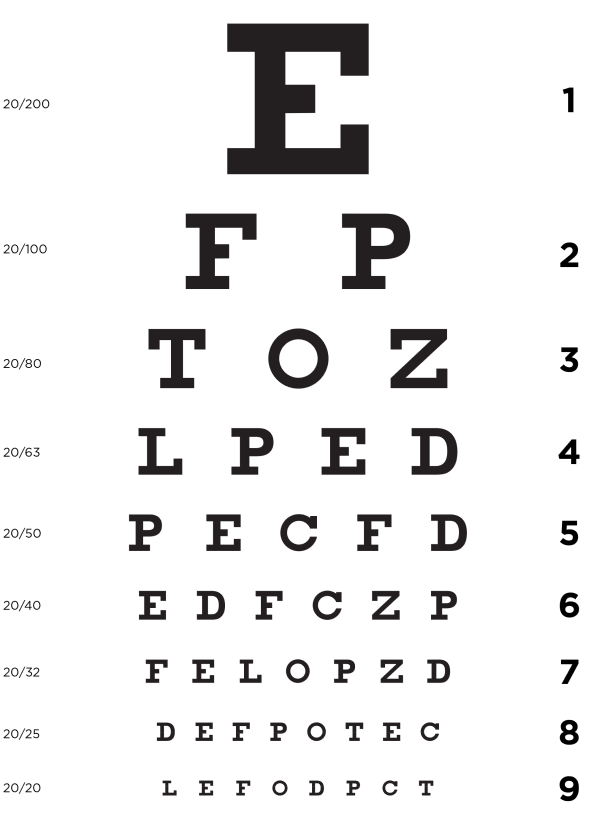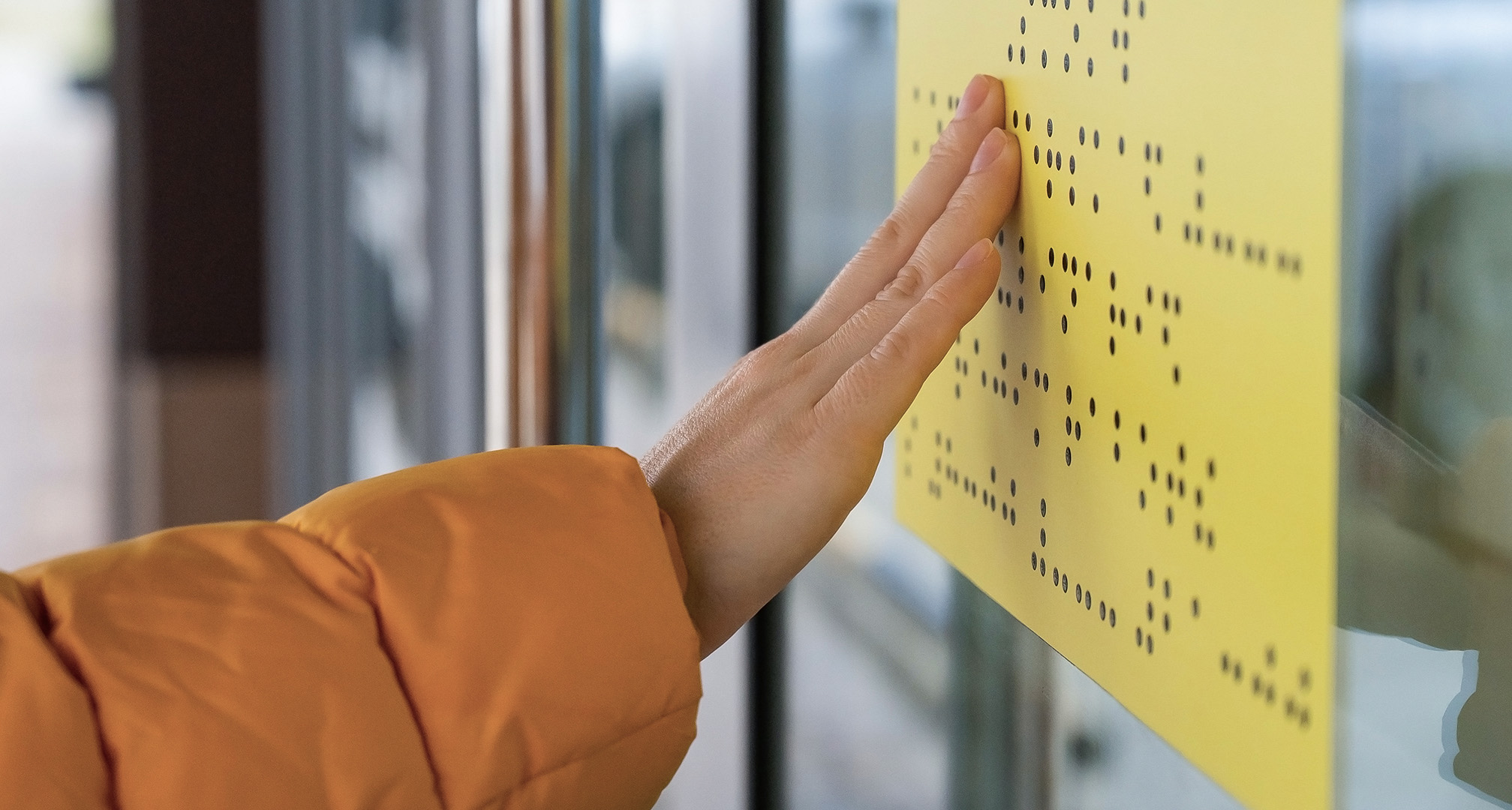What does it mean to be legally blind?

Table of contents
- Definition of legal blindness
- Criteria for legal blindness
- How to test for legal blindness
- What is it like to be legally blind?
- What’s the difference between being legally blind and visually impaired?
- Causes of legal blindness
- Managing legal blindness
- Frequently asked questions
- Closing thoughts from Lentiamo
Legal blindness is a term used by governments to describe a certain level of vision impairment. In many countries, visual acuity of 6/60 or worse can qualify as legally blind. This figure often acts as a threshold for access to various benefits and support services.
In this article, we'll explore what it means to be legally blind and learn about the various criteria that constitute this particular type of visual impairment.
Definition of legal blindness
Legal blindness is a term that indicates a level of visual impairment that is recognised by law. A person who is legally blind has significant vision loss that cannot be corrected beyond a certain point with glasses, contact lenses, or other visual aids.
In contrast, absolute or total blindness refers to a complete lack of light perception. A person who is totally blind has no functional vision and likely relies primarily on non-visual means, such as auditory or tactile senses, to navigate their environment.
There are varying levels of distance visual impairment as defined by the World Health Organization.1 Eye care specialists take a combination of visual acuity and other lifestyle factors into consideration before deeming a person legally blind. Visual impairment figures act as one guideline for diagnosis.
- Mild – visual acuity worse than 6/12 to 6/18
- Moderate – visual acuity worse than 6/18 to 6/60
- Severe – visual acuity worse than 6/60 to 3/60
- Blindness – visual acuity worse than 3/60
The World Health Organization (WHO) defines blindness as having a visual acuity of less than 3/60 in the better eye, even with the use of corrective lenses.2 You may qualify as legally blind if your visual acuity is 6/60 or worse in many countries. In addition to visual acuity, other factors such as any ongoing corrective eye surgeries or treatments, are taken into consideration by your specialist to determine certification.
Criteria for legal blindness
In Ireland, you may be able to register as legally blind if your visual acuity is 6/60 or worse in the better eye (written as 20/200 in North America).
The first number is the distance from which you read the chart. The second number is the distance from the chart at which a person with "normal" eyesight would clearly see the same figures. 6/6 (20/20) is considered perfect vision. If you have 6/60 vision, you see something clearly from a distance of six metres (20 feet) that a person with perfect eyesight can see at a longer distance of 60 metres (200 feet).
How to test for legal blindness
Testing for legal blindness begins with an eye exam by a qualified eye care professional. Generally, the specialist will take two main factors into consideration: visual acuity and visual field.
Visual acuity
Visual acuity is one of the main criteria used to determine legal blindness. Visual acuity is a straightforward measurement of the sharpness of a person's central vision and their ability to see details. It's typically tested using a standard Snellen eye chart pictured below.

Visual field
Visual field is another important criterion used to determine legal blindness. Visual field refers to what a person can see at the edge of their vision when looking straight ahead, without moving their eyes. A visual field test measures the degree to which a person can see around them.
Taking an online eye test can be useful to quickly check your visual acuity. Just note that only a qualified professional can determine if your visual impairment meets the appropriate criteria as a legally blind prescription.
What is it like to be legally blind?
Most people who are legally blind have some level of functional vision. Some legally blind people can perform tasks like reading and working with the use of adaptive tools. Others may only be able to perceive mainly shadows, colours, shapes, and outlines.
Legal blindness is a wide spectrum and what someone sees depends greatly on the individual. Lighting, time of day, and environmental factors can also impact how a person sees. Depending on the individual, day-to-day life can be impacted in distinct ways.
What’s the difference between being legally blind and visually impaired?
Visual impairment is a broad term that refers to any type of vision loss and can range from mild to severe. It may be caused by various conditions such as refractive errors, cataracts, glaucoma, diabetic retinopathy, and macular degeneration. One or both eyes can be affected, resulting in reduced clarity, blurred vision, or a loss of peripheral vision.
On the other hand, legal blindness is a specific term used by governments and agencies. Being legally blind qualifies an individual for certain benefits and services in many countries.

Remember that not everyone legally blind person will need or use tactile writing systems, such as braille, as pictured below. It depends on the individual, their preferences, and needs.
Causes of legal blindness
Causes of legal blindness can include medical diseases, infections, and injuries. A significant visual impairment can be present at birth or present itself over time. These are the leading causes of blindness according to he WHO3:
- age-related macular degeneration.
- cataract
- diabetic retinopathy
- glaucoma
- uncorrected refractive errors
Managing legal blindness
In many countries, registering as legally blind can provide various benefits. These might include things like financial assistance or pensions, access to support services, resources, and accommodations. Special education programmes, job trainings, and assistive technologies, like screen readers or magnifiers, can help you navigate daily life with greater ease.
It's important to note that just because a person's vision may reach the legally blind threshold, registration is a personal choice and is voluntary. Maximising a person's independence by providing access to services and products is a main benefit of registering as legally blind.
Frequently asked questions
What prescription is legally blind?
Visual acuity of 6/60 (20/200) or worse is considered legally blind in most countries. Someone with 6/60 vision cannot clearly see an object at six metres (20 feet) that someone with standard vision can see at 60 metres (200 feet).
What is the highest eye prescription?
Generally, the maximum powers corrected by contact lenses are -12.00 for myopia (nearsightedness) and +8.00 for hyperopia (farsightedness). Glasses prescriptions can range anywhere from -20.00 to +12.00.
Closing thoughts from Lentiamo
In conclusion, legal blindness is a term used by the medical community and governments to define a certain level of visual impairment. Registering as legally blind may differ from country to country, and the extent of vision loss differs from person to person.
Legal blindness can also present unique challenges. However, advancements in technology, support services, and inclusive policies can enhance opportunities and quality of life for individuals with visual impairments.
Read more
Want to learn more about common visual impairments?
- Nearsightedness (myopia)
- Farsightedness (hyperopia)
- Age-related vision loss (presbyopia)
- Astigmatism
Sources
1, 2, & 3. World Health Organization, Blindness and vision impairment








Comments